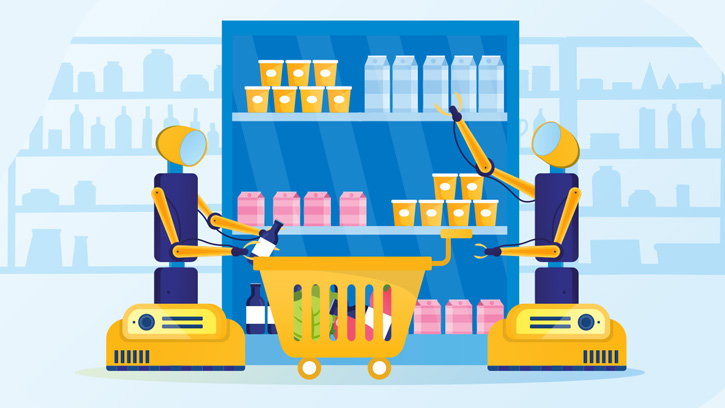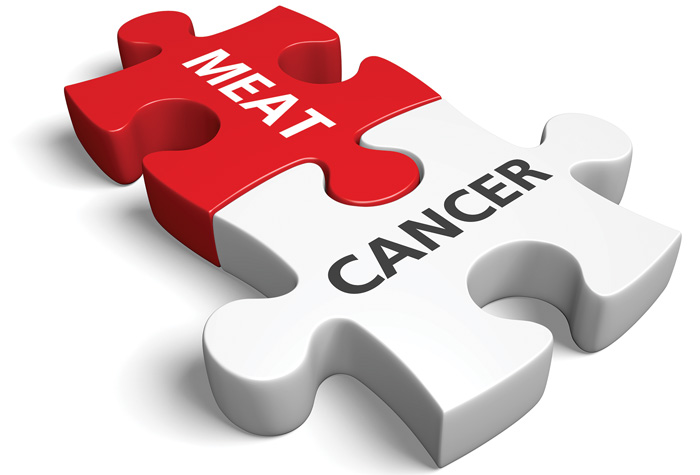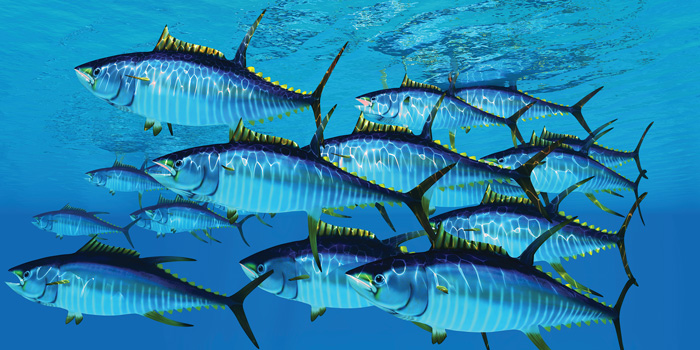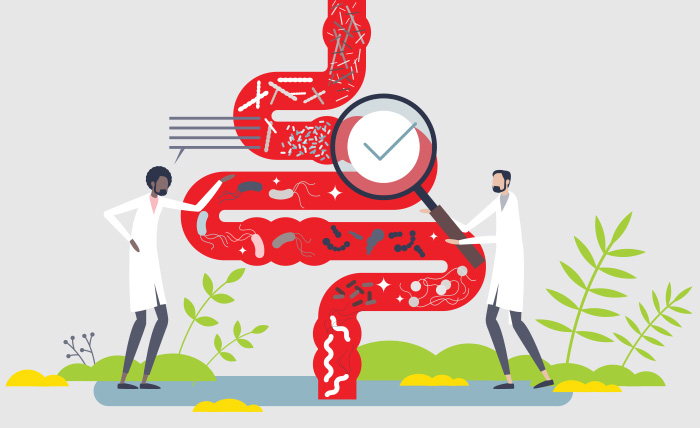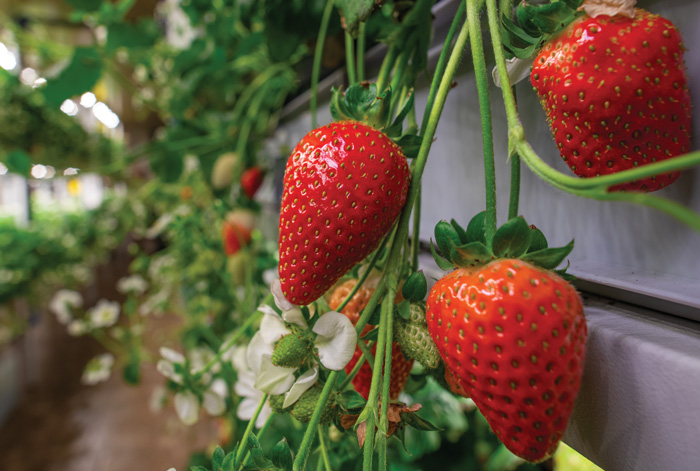Kroger opens ‘dark’ facilities, New research on meat and cancer
OMNIVORE
RETAIL
Food without foot traffic
Leading U.S. grocery retailer Kroger is reaching new markets without opening traditional grocery stores. The company recently announced it will open fulfillment centers in three locations where it currently has no presence: Austin, San Antonio, and Birmingham, Ala.
The new locations will be spoke facilities powered by the Kroger Fulfillment Network and Ocado Group, a leader in grocery e-commerce. They follow the company’s successful entry into Florida without physical stores in 2021.
Rather than relying on traditional foot traffic in retail stores, the fulfillment centers combine artificial intelligence, advanced robotics, and automation to make grocery ordering and delivery easy and intuitive for consumers. At each fulfillment site, more than 1,000 bots whizz around giant 3-D grids, orchestrated by proprietary air-traffic control systems. The grid contains totes with products and ready-to-deliver customer orders.
As customers’ orders near their delivery times, the bots retrieve products from the grid and present them at pick stations. There, items are sorted for delivery, a process that is governed by algorithms that ensure items are intelligently packed. For example, fragile items are placed on top, bags are evenly weighted, and each order is optimized to fit into the lowest number of bags.
After orders are packed, they are loaded into a refrigerated delivery van that can store up to 20 orders. AI-driven processes optimize delivery routes based on factors like fuel efficiency and road conditions. Drivers may travel up to 90 miles to make deliveries from each facility.
Kroger’s Fulfillment Network is just the latest example of “dark” grocery stores, an approach that started with Tesco in the United Kingdom and is also used by Amazon and Walmart. With the rise in online grocery ordering during the pandemic, this model has become increasingly important. Online grocery sales are expected to account for more than 25% of total food sales by 2025, up from 13% projected before COVID, according to Incisiv data.
RESEARCH
Less meat = fewer cancers
Eating meat five times or fewer per week is associated with a lower overall cancer risk, according to research published in the journal BMC Medicine. For the study, researchers from the University of Oxford analyzed data collected from almost 500,000 British adults between 2006 and 2010.
The participants, aged between 40 and 70 years, reported how often they ate meat and fish. Using health records, the researchers calculated the incidence of new cancers that developed over an average period of 11 years.
The study found that the overall cancer risk was 2% lower among people who ate meat five times or fewer per week. The risk was 10% lower among those who ate fish but not meat, and 14% lower among vegetarians and vegans, compared with those who ate meat more than five times per week.
Less meat consumption was associated with significantly lower instance of some specific cancers, the study showed. For example, participants who ate meat five or fewer times per week had a 9% lower risk of colorectal cancer, compared with those who ate meat more than five times per week. Also, the risk of prostate cancer was 20% lower among men who ate fish but not meat and 31% lower among men who followed a vegetarian diet, compared with those who ate meat more than five times per week.
However, because the dietary data was collected at a single time point, rather than over a continuous period of time, it may not represent participants’ lifetime diets. The researchers caution that the observational nature of their study does not allow for conclusions about a causal relationship between diet and cancer risk.
Traceability access for small fisheries
A lack of reliable data makes it difficult to ensure consistent sustainability practices at small yellowfin tuna fisheries in the Philippines. Working with the World Wildlife Federation-Philippines, IFT’s Global Food Traceability Center (GFTC) analyzed the potential for such fisheries to adopt digital traceability systems, facilitating better data capture. To learn more about the challenges the fisheries face and GFTC’s analysis of potential solutions, please visit iftexclusives.org/GFTC-small-fisheries.
AGRICULTURE
Is AI farming dangerous?
Artificial intelligence (AI) offers great promise for improving crop management and agricultural productivity. In fact, AI is set to revolutionize agriculture and help feed our growing global population in a sustainable way. However, new research shows that using AI technologies at scale presents risks that are being overlooked or unconsidered.
A risk analysis, published in the journal Nature Machine Intelligence, shows that the future use of AI in agriculture presents substantial risks for farms, farmers, and food security. And currently, these risks are poorly understood and underappreciated.
Smart machines may have the capability to run farms, managing the planting, fertilizing, monitoring, and harvesting. But it takes just one competent hacker to take the whole thing down, jeopardizing the availability of food for hundreds or thousands of people.
Researchers from the University of Cambridge’s Centre for the Study of Existential Risk explored the risks associated with AI in agriculture. They say that potential risks must be addressed responsibly, and new technologies properly tested in experimental settings to ensure they are safe and secure against accidental failures, unintended consequences, and cyberattacks.
For example, cyberattackers could poison datasets or shut down sprayers, autonomous drones, and robotic harvesters to disrupt AI-driven commercial farms. To combat this risk, the researchers suggest that “white hat hackers” help companies uncover any security failings during the development phase, so that systems can be safeguarded against real hackers.
Other risks include the overuse of fertilizers, which could erode soil over the long term, or the overuse of pesticides, which could poison ecosystems. The authors suggest involving applied ecologists in the technology design process to avoid such scenarios.
While AI offers promise for revolutionizing agriculture and helping to solve the problems of global food insecurity, recklessly deploying it on a large scale without considering the risks could be disastrous. Instead, farmers and agricultural companies must closely consider the potential risks and work to mitigate them early in the technology design, the researchers emphasize. Acknowledging and combating the risks will be essential for AI-driven agriculture to fulfill its potential.
INGREDIENTS
Better gluten-free beer
Gluten-free eating has become mainstream, but gluten-free drinking isn’t always that easy. Traditionally, brewers have had difficulty producing gluten-free beer from gluten-free malts—and studies have concluded the reason was that gluten-free malts have lower enzyme activity, according to Darrell Cockburn, assistant professor of food science in the College of Agricultural Sciences at Pennsylvania State University.
However, a recent Penn State study showed that the lower enzyme activity was not the primary factor limiting brewers’ ability to produce good-tasting gluten-free beer. Instead, the mashing procedures used for barley in conventional beer production simply don’t work as well with gluten-free malts.
Andrew Ledley, a doctoral candidate in food science who previously worked in a craft brewery, led the research. “We thought that gluten-free malts could be utilized successfully if improved mashing procedures were developed,” said Ledley in a press release.
The study’s findings, which were published in Beverages, showed that gluten-free malts can produce high fermentable sugar concentrations without requiring supplemental enzymes. Instead, Penn State developed a modified, lower-temperature brewing procedure, which retains enzyme activity and produces high fermentable sugar concentrations using gluten-free malts. Penn State has applied for a provisional patent for the process, known as the “ExGM Decoction Mashing Procedure.”
The research suggests that gluten-free grains can be used to produce drinkable beers, and brewers can begin to focus their attention on producing high-quality, gluten-free products.
DIET & NUTRITION
Microbiota mania
Diets that support the gut microbiota will become increasingly popular over the next decade, according to Mintel’s Global Food and Drink Trends 2030 report. In fact, microbiota-based diets will be the next extension of personalized health, as consumers will embrace at-home testing kits to help them better understand their individual gut microbiota, the report authors forecast.
Already, the gut microbiota is an important focus in integrative medicine. Beyond digestive health, the gut microbiota may influence immune health, metabolic health, and even neurobehavioral traits. Deeper understanding of these connections will create new opportunities for products to support a healthy gut microbiota and, potentially, improve overall health.
Currently, researchers are exploring the gut-brain axis, gut-heart axis, gut-oral axis, gut-lung axis, and more. Research is also underway to understand how changes to the gut microbiota can affect other areas of health and potentially manage diseases that are rooted in inflammation, such as rheumatoid arthritis and psoriasis.
In the coming years, food and drink that support or repair the gut microbiota will be more recognized, according to the report. Probiotics, prebiotic fibers, and fermented foods will appeal to consumers who are looking to support their overall health, not just their gut health. Conversely, increased awareness about the gut microbiota will give consumers a new reason to avoid ingredients associated with inflammation or gut dysbiosis.
Finally, technology—such as at-home testing kits—will enable consumers to construct hyper-individualized approaches to health, based on their individual gut microbiota.
FLAVORS
Chocolate choices
Dark chocolate has a reputation for offering more health benefits than its sweeter alternative, milk chocolate. And increasingly, in an effort to reduce sugar intake or take advantage of dark chocolate’s perceived health benefits, consumers are more interested in darker chocolates.
The problem? Darker chocolate is often bitter and astringent, which can make it unpalatable for some. Recent research shows that candy makers who want to develop products that contain 100% chocolate and no sugar can reduce bitterness and optimize flavor acceptance by roasting cocoa beans longer and at higher temperatures. The research was conducted at Pennsylvania State University’s Sensory Evaluation Center in the Department of Food Science.
In the study, 145 people evaluated 27 different preparations of 100% chocolate, made from cocoa beans roasted at various intensities. The researchers experimented with roasting treatments to modify the flavor of the chocolate and found that roasting longer and at higher temperatures resulted in chocolate that more people found pleasing to eat.
The findings, which were published in Current Research in Food Science, showed that more intense roasting conditions—such as 20 minutes at 340°F, 80 minutes at 275°F, and 54 minutes at 304°F—all led to chocolate consumers finding unsweetened chocolate the most acceptable. Conversely, research participants did not find 100% chocolate acceptable when made from raw or lightly roasted cacao, such as beans roasted 11 minutes at 221°F, or 55 minutes at 147°F.
INNOVATION
Strawberry crops forever
Vertical farming, in which crops are grown in indoor facilities, stacked in rows from floor to ceiling, has become a widely accepted approach for growing lettuce and other salad greens. Now vertical farming companies are branching out with plans to grow wider varieties of crops with the technology-based approach.
In March, Bowery Farming started selling its warehouse-grown strawberries at gourmet grocery stores in New York City, just a few miles from the warehouse where the berries are grown, CNBC reported.
Vertical farming makes it possible to grow higher yields in closer proximity to urban centers, and to harvest using automation. That means growers can deliver fresher, higher-quality produce to grocery stores within a few days of harvest.
Along with Bowery, other companies are also working to begin growing a broader assortment of produce with vertical farming. Vertical farming company Plenty has partnered with strawberry grower Driscoll’s to cultivate strawberries indoors in Wyoming, and to build another indoor strawberry farm to supply the northeastern United States.


